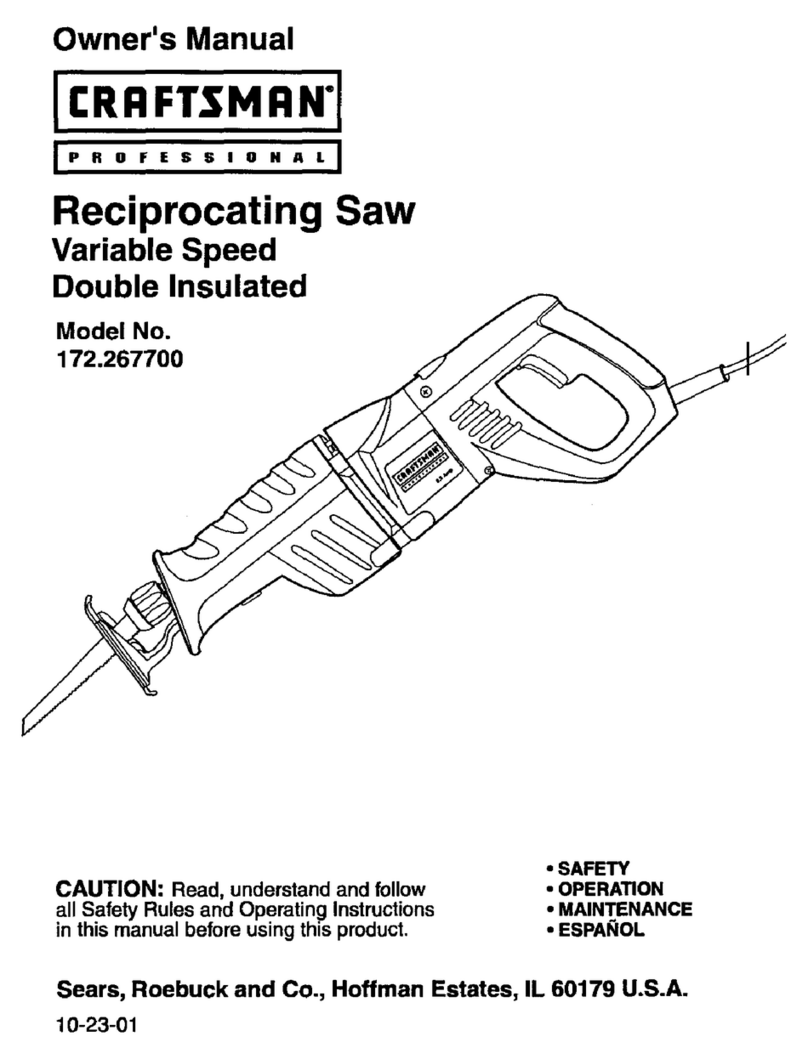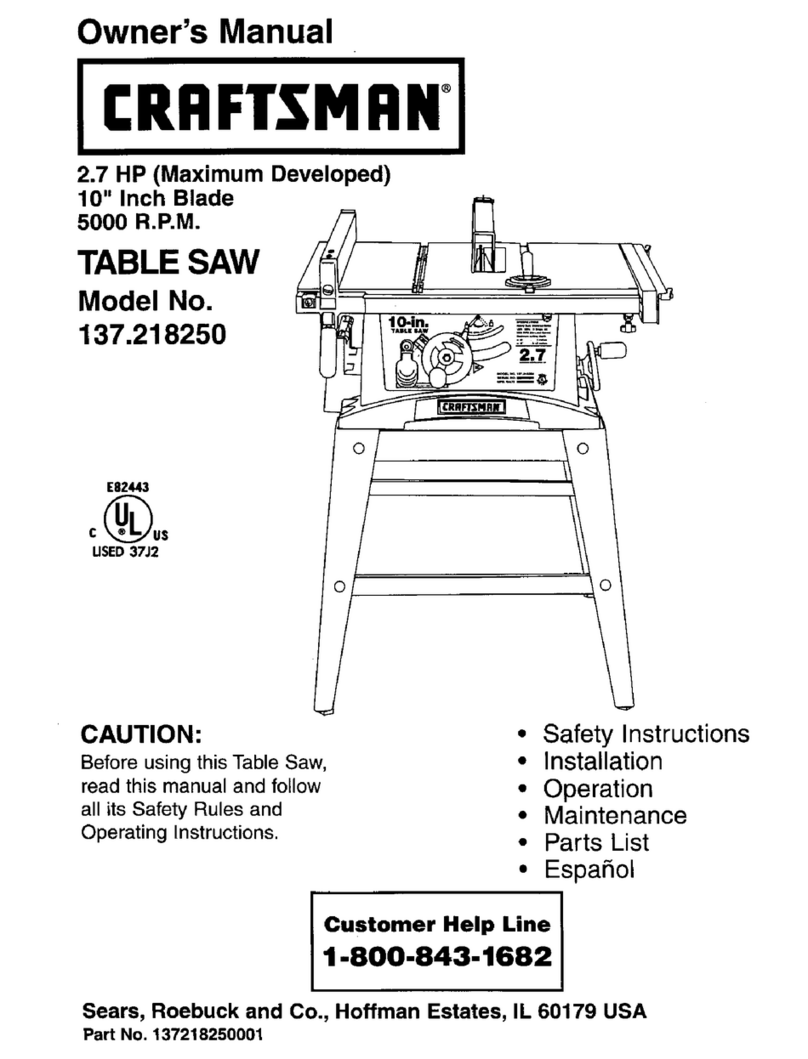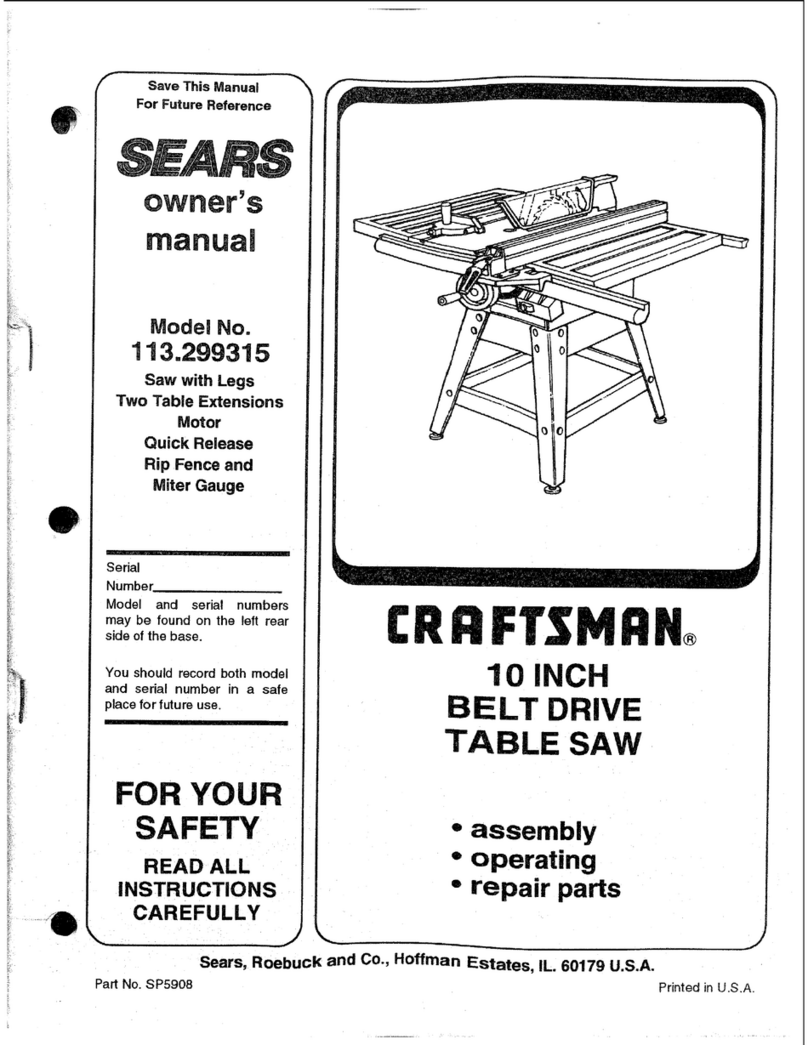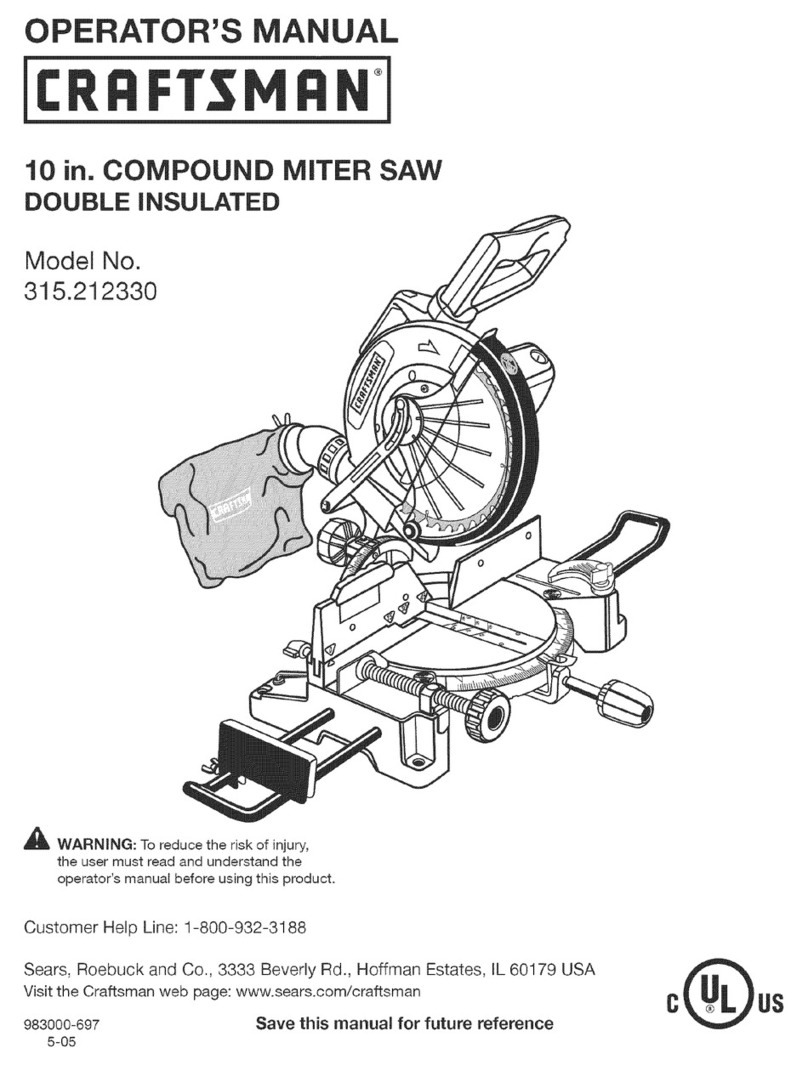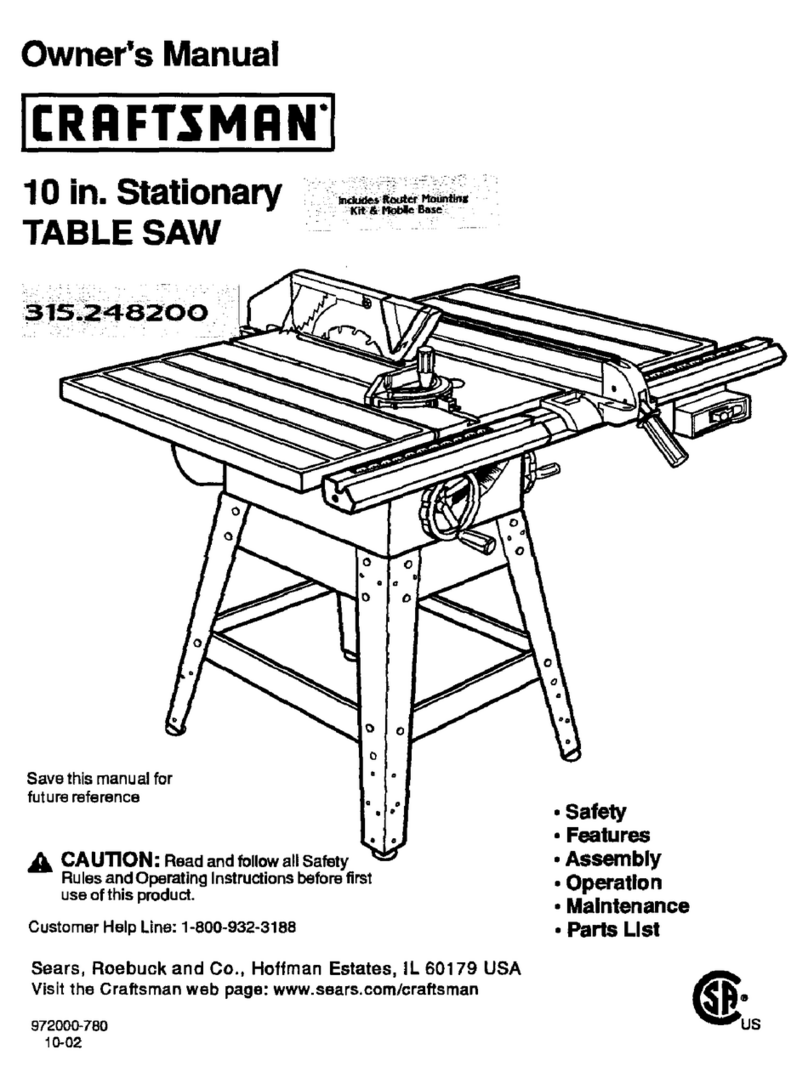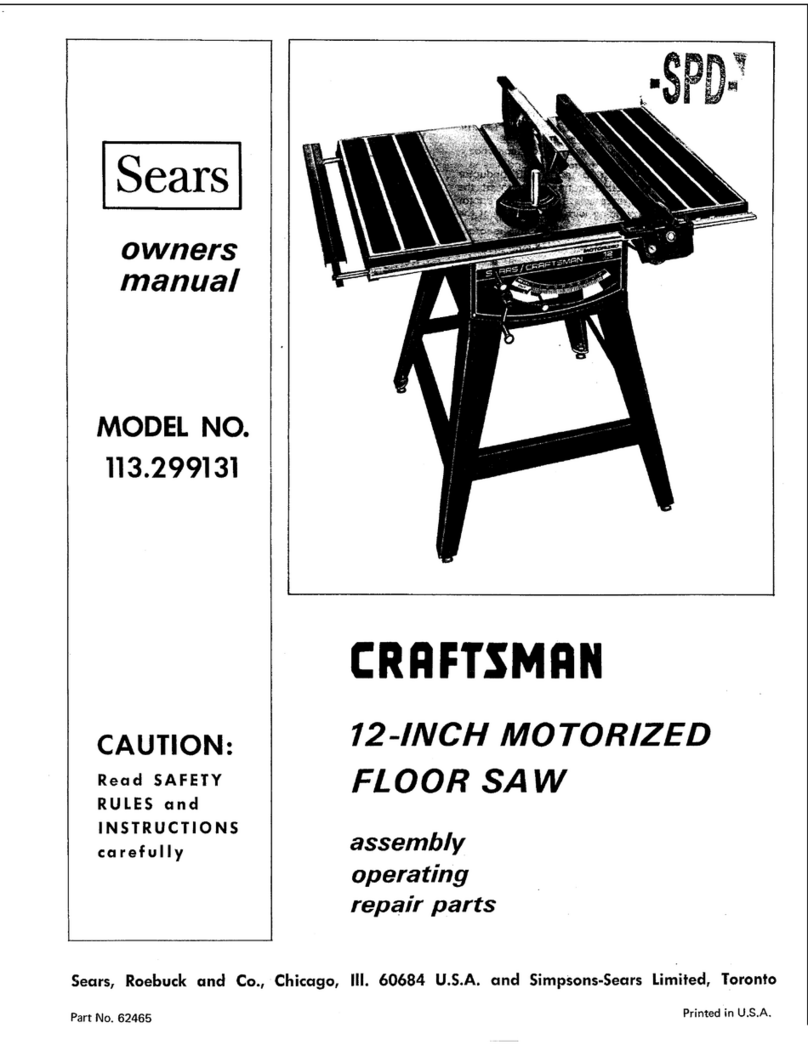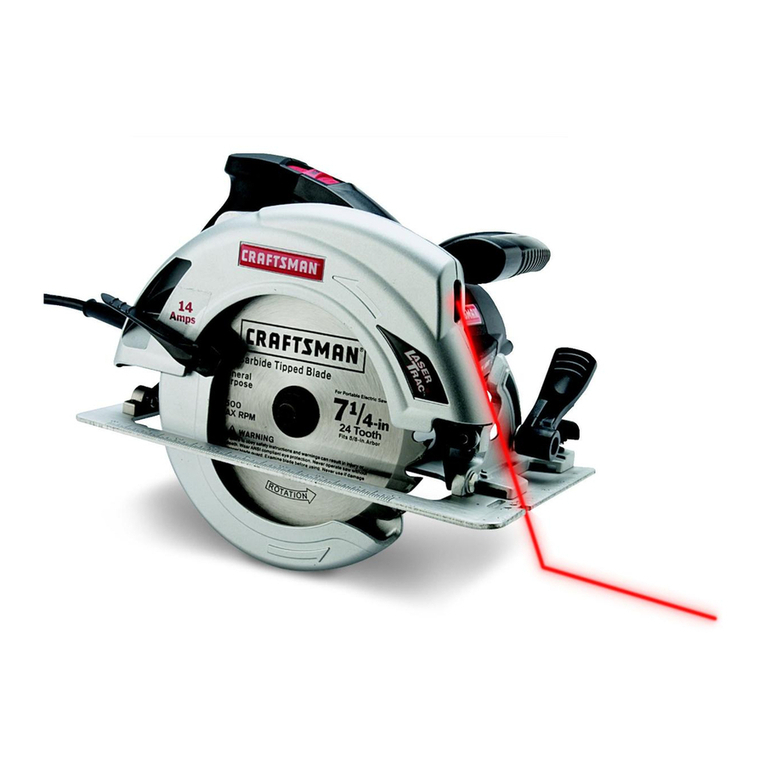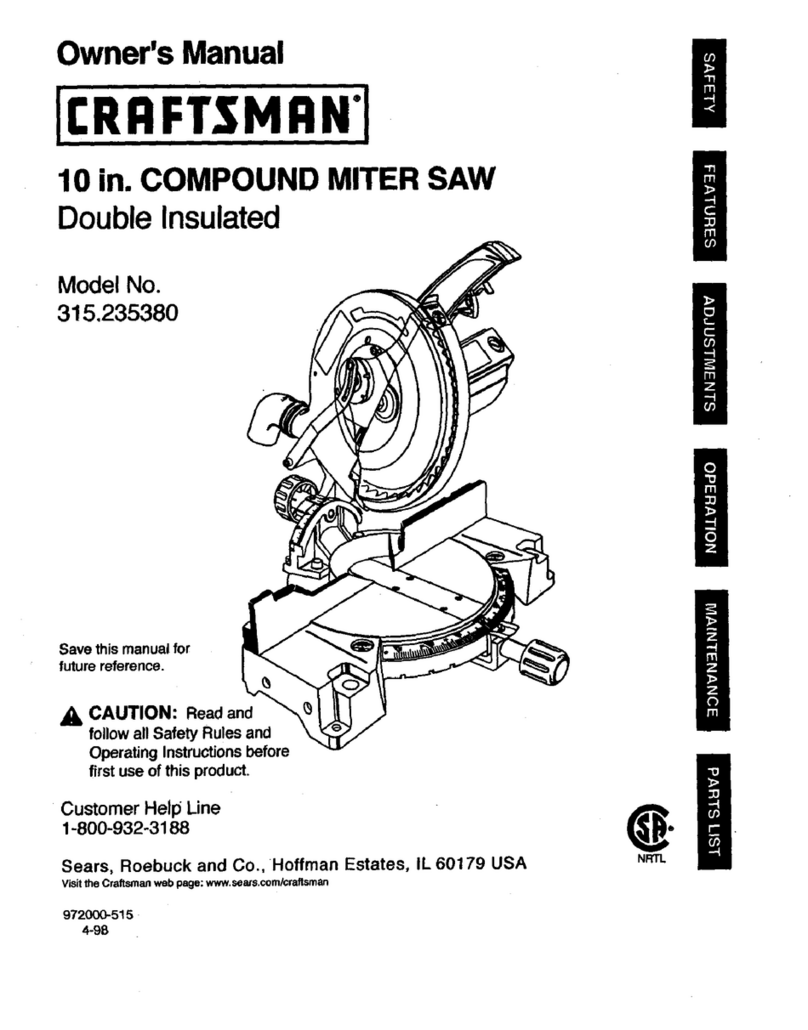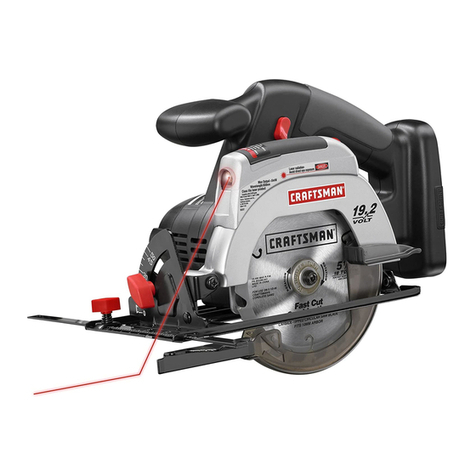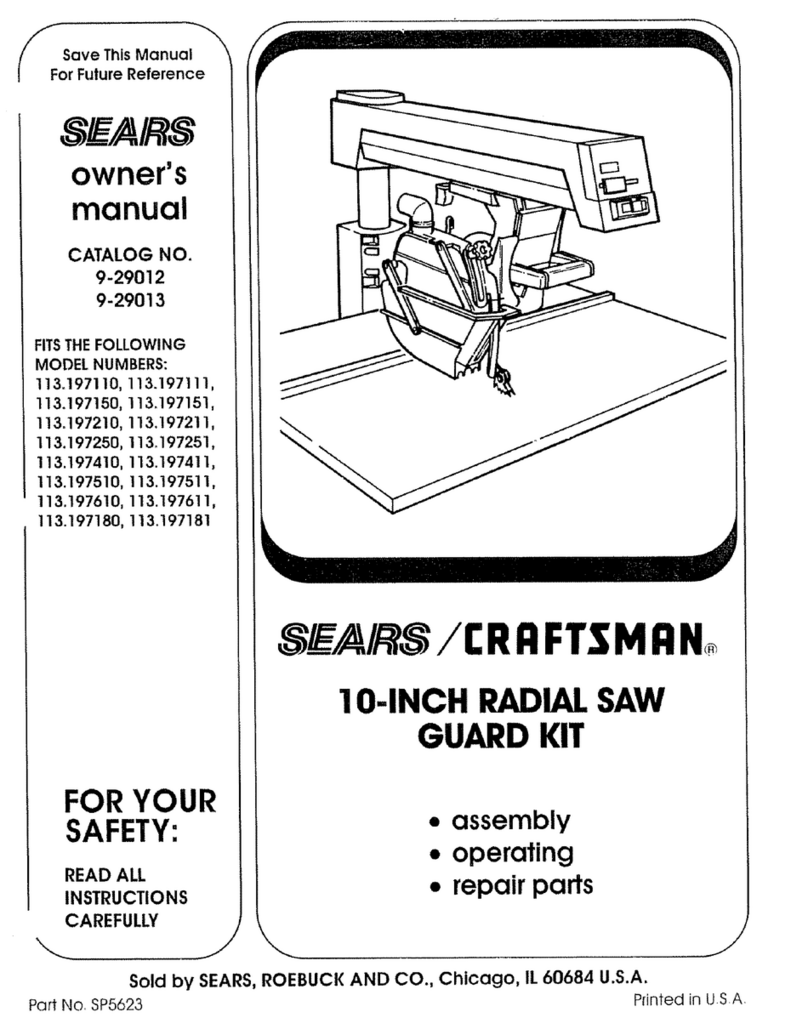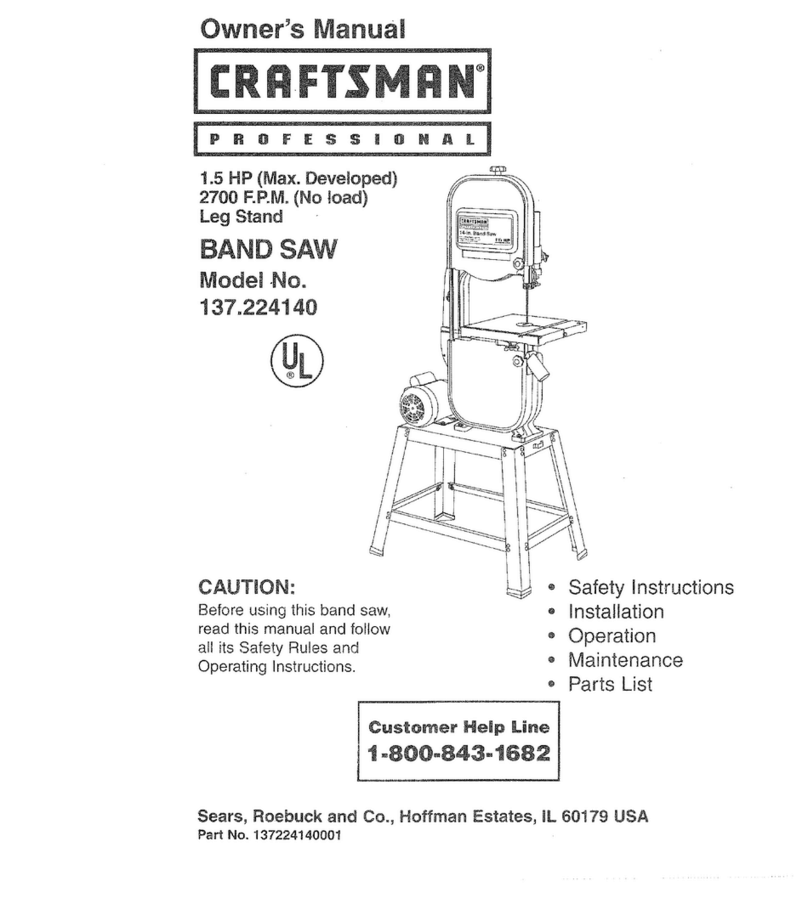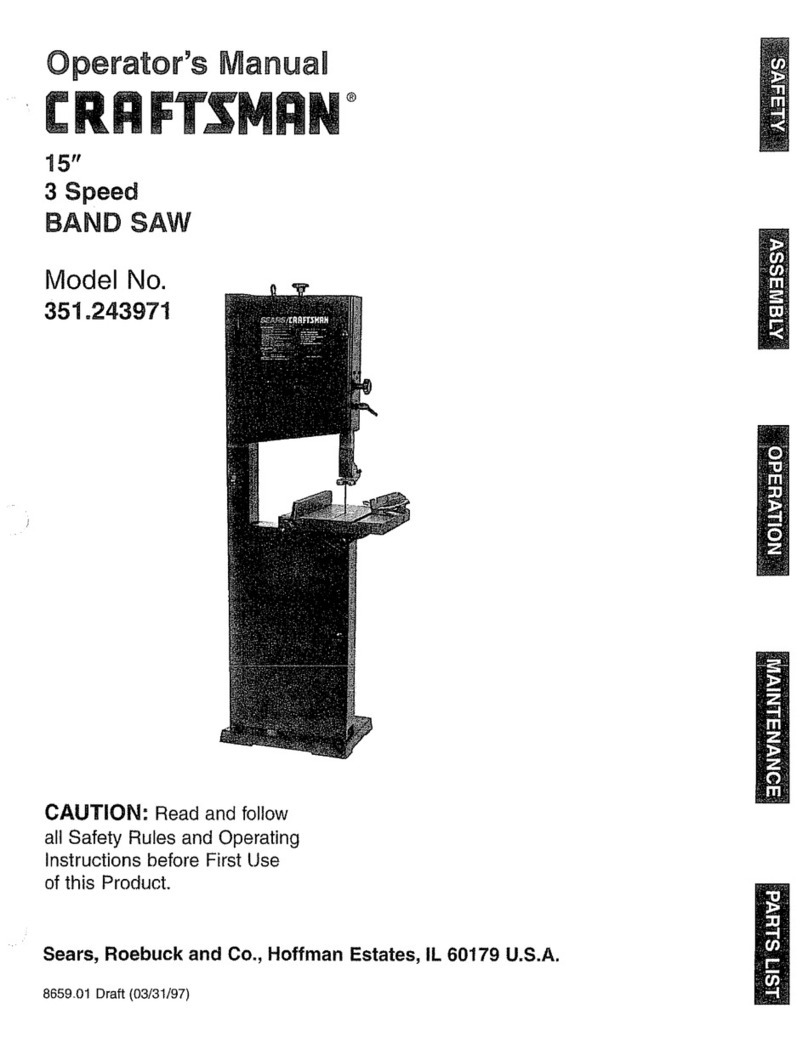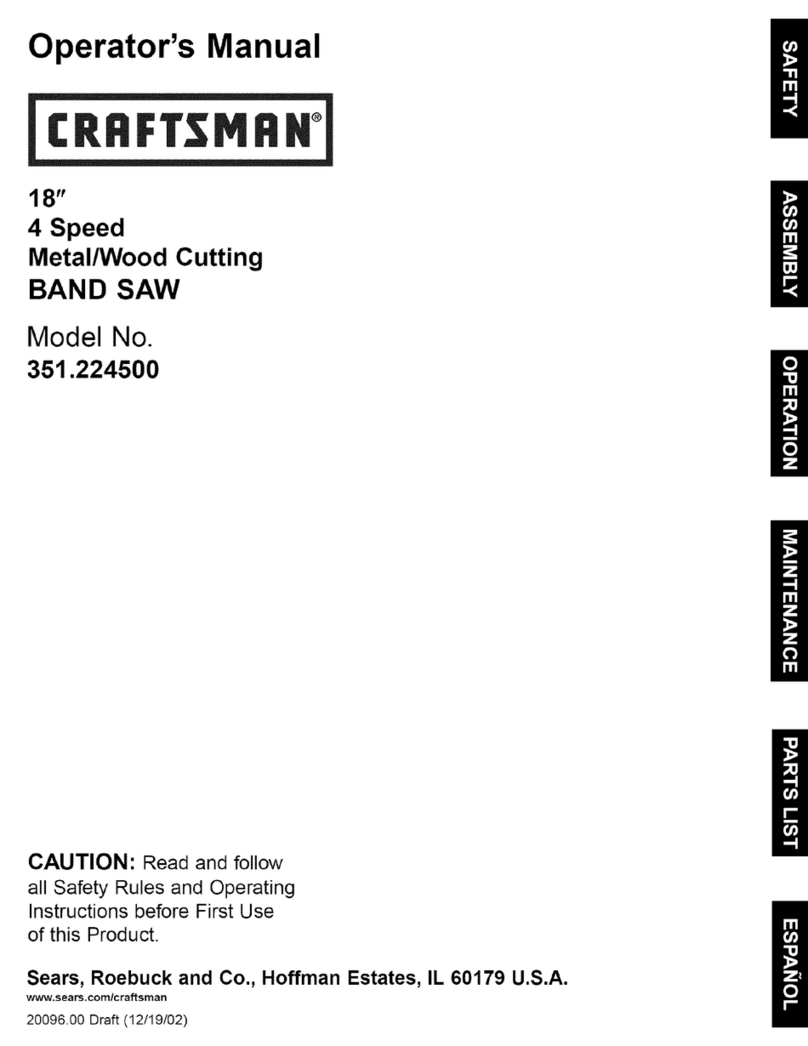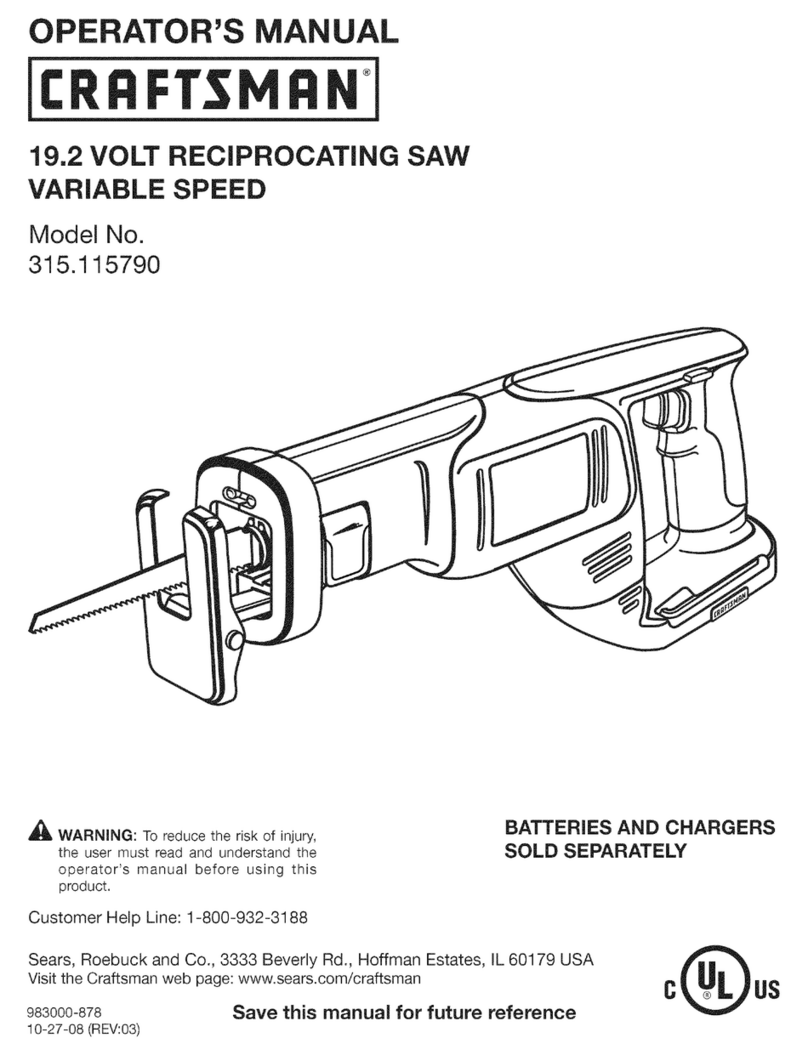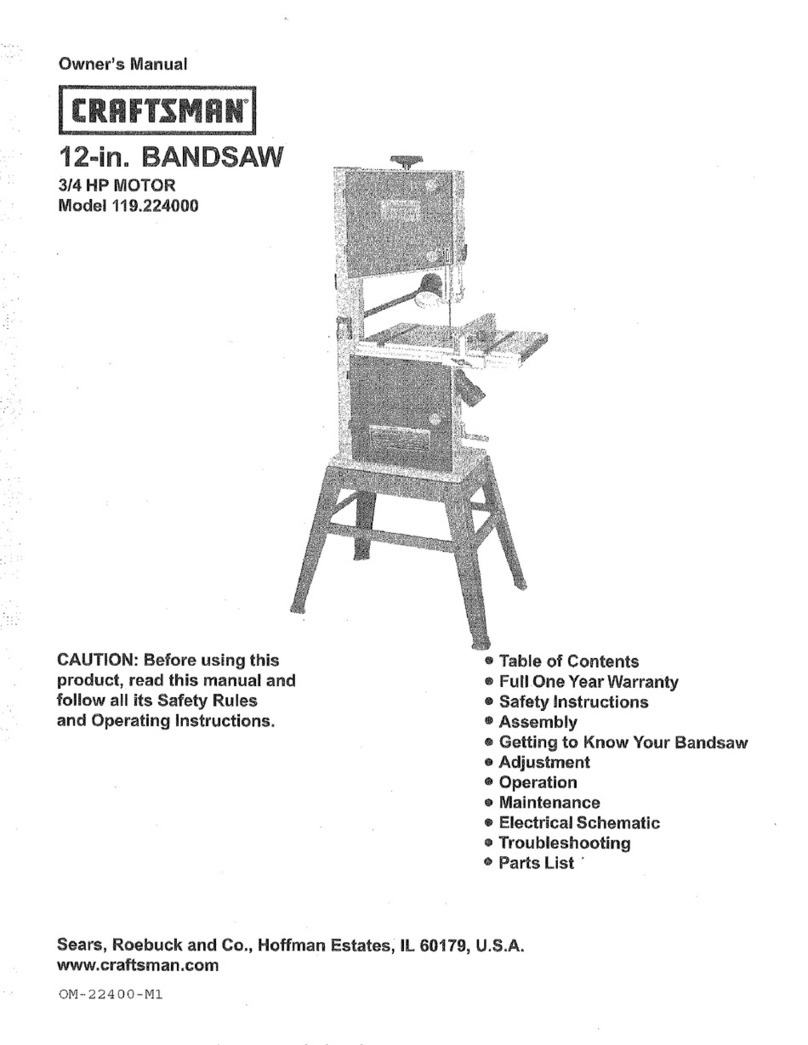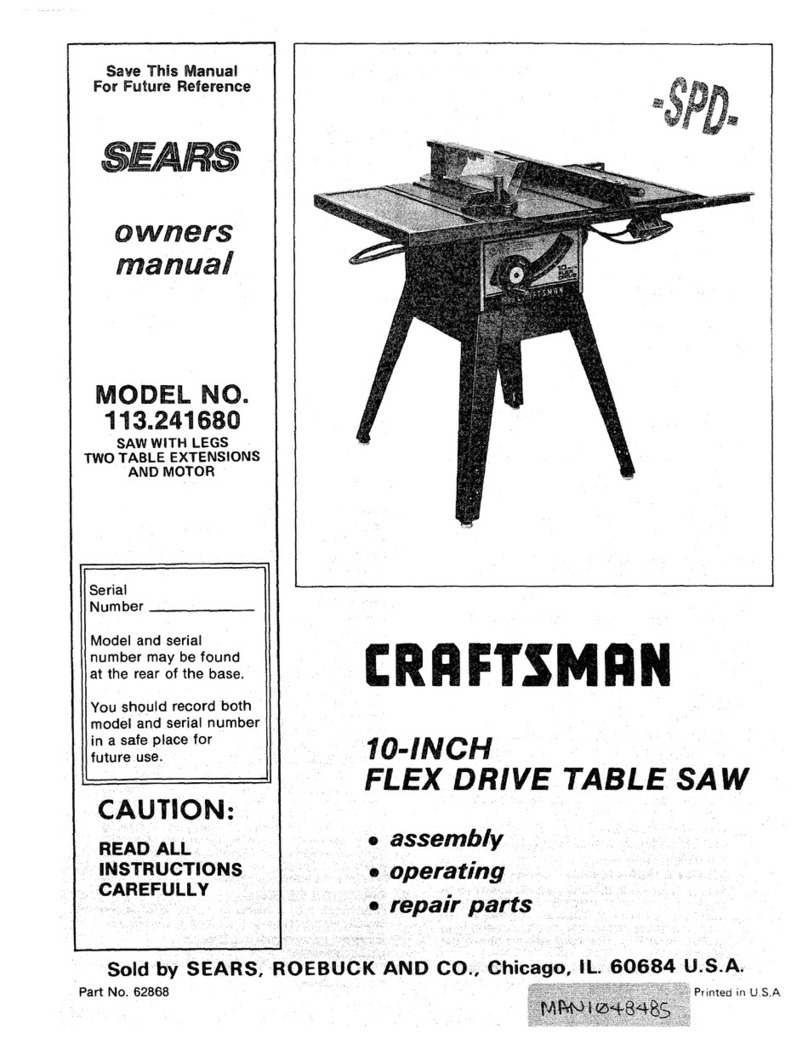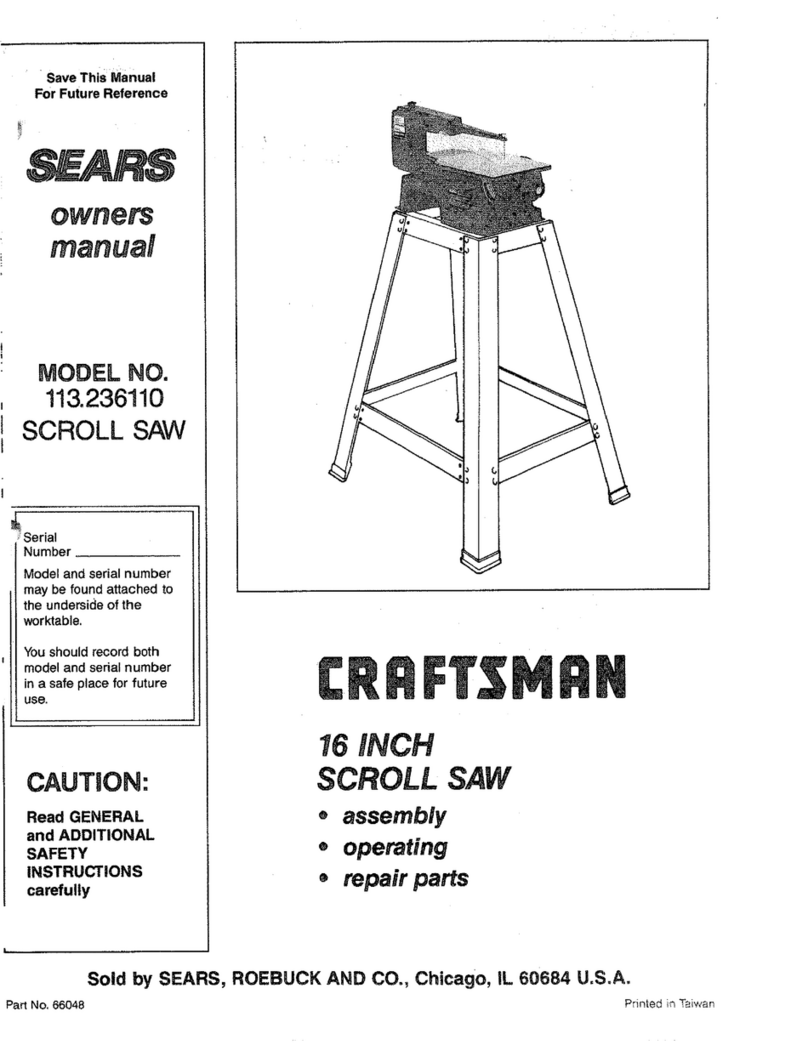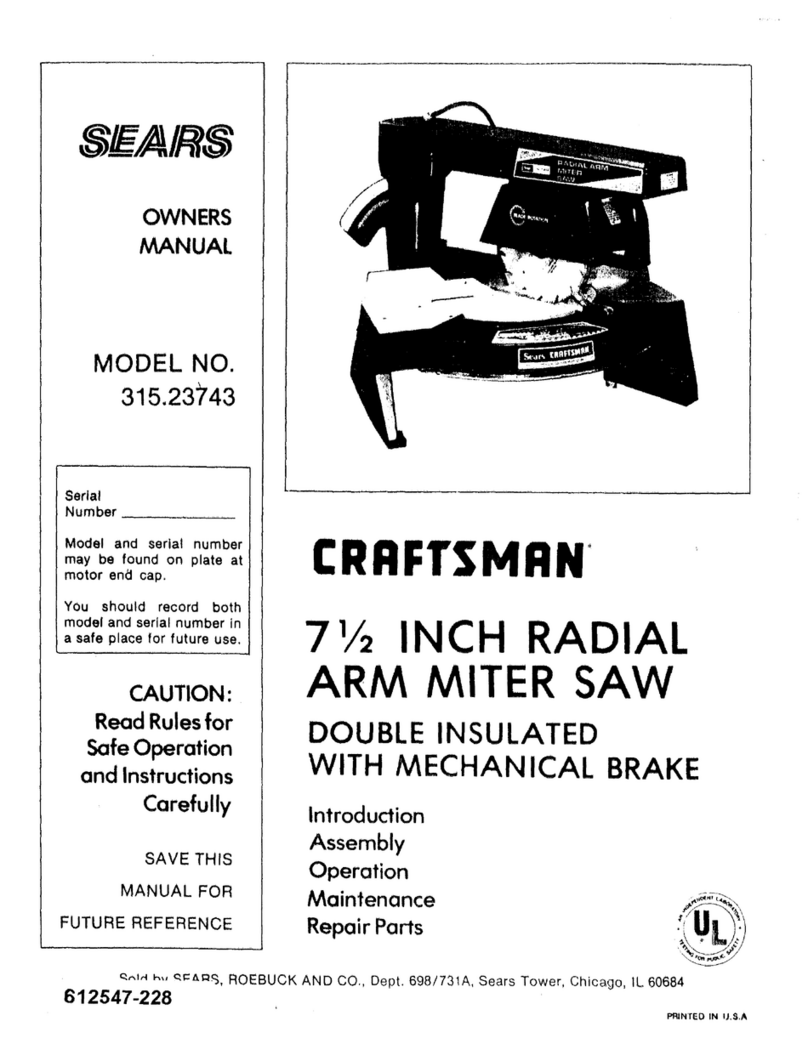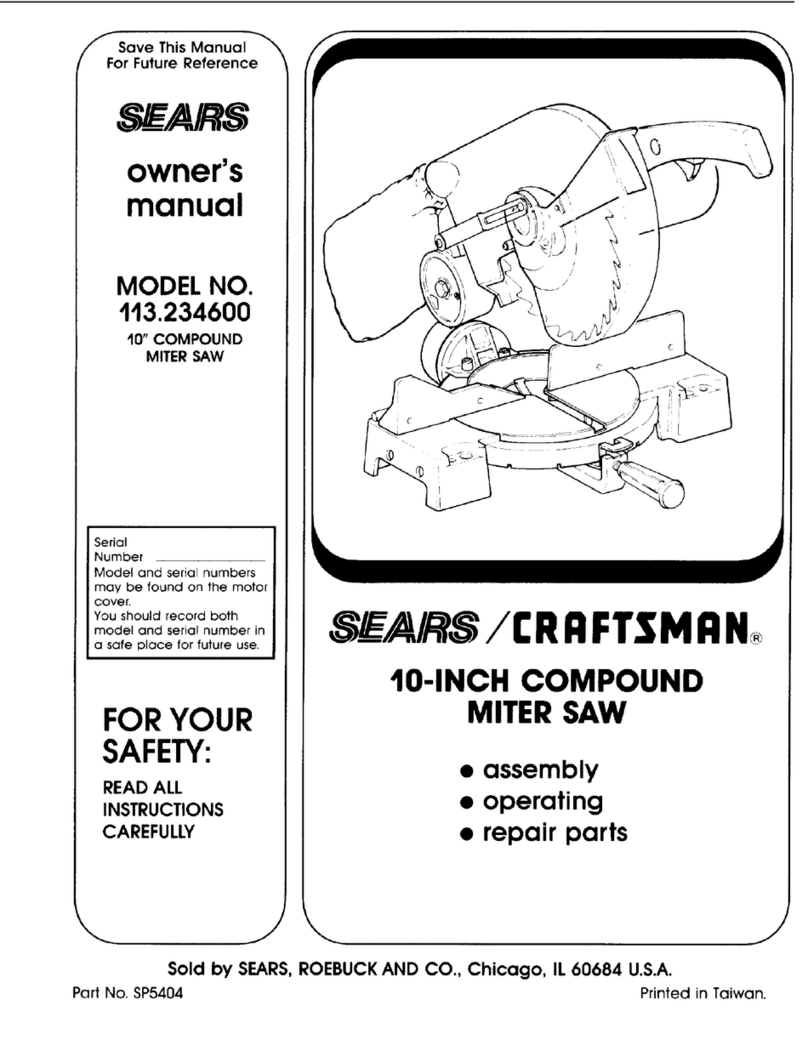21 .NEVER cut small pieces. If the
workpiece being cut would cause
your hand or fingers to be within
8-3/4 in. of the saw blade the
workpiece is too small.
22.PROVIDE adequate support to the
sides of the saw table for long work
pieces.
23.NEVER use the miter saw in an
area with flammable liquids or
gases.
24.NEVER use solvents to clean plastic
parts. Solvents could possibly
dissolve or otherwise damage the
material.
25.SHUT OFF the power before
servicing or adjusting the tool.
26.DISCONNECT the saw from
the power source and clean the
machine when finished using.
27.MAKE SURE the work area is clean
before leaving the machine.
28.SHOULD any part of your miter saw
be missing, damaged, or fail in any
way, or any electrical component fail
to perform properly, lock the switch
and remove the plug from the power
supply outlet. Replace missing,
damaged, or failed parts before
resuming operation.
29.Because of the downward cutting
motion, your safety requires that
you stay very alert to keeping hands
and fingers away from the path that
the blade travels.
30.Be sure all guards are in place
and working. If a guard seems
slow to return to its normal position
or "hangs-up", adjust or repair it
immediately. Be alert at all times
- especially during repetitive,
monotonous operations. Don't be
lulled into carelessness due to a
false sense of security. Blades
are extremely unforgiving. Clean
the lower guard frequently to help
visibility and movement. Unplug
before adjustment or cleaning.
31.Abrasive cut-off wheels should
not be used on miter saws. Miter
saw guards are not appropriate for
abrasive cut-off wheels.
32.To avoid loss of control or placing
hands in the path of the blade,
hold or clamp all material securely
against the fence when cutting. Do
not perform operations freehand.
33.Support long material at the same
height as the saw table.
34.After completing a cut, release the
trigger switch and allow the blade to
come to a complete stop, then raise
the saw blade from the workpiece
35.Lock the miter saw head in the
down position during transport or
when not in use.
36.DRY RUN - It is important to know
where the blade will intersect with the
workpiece during cutting operations.
Always perform a simulated cutting
sequence with the power tool switched
OFF to gain an understanding of the
projected path of the saw blade. At
some extreme angles, the right or left
side fence might have to be removed
to ensure proper clearance prior to
making a cut.
